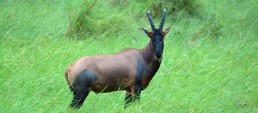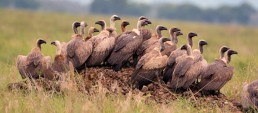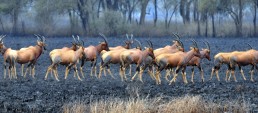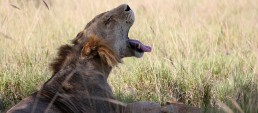OmoNational Park
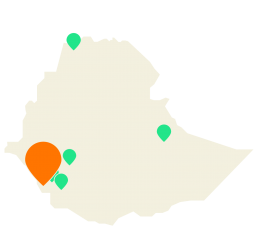
Omo National Park is located in South Omo Zone beyond the west bank of the Omo River. It covers approximately 40,680 ha of area. It is 870 km southwest of Addis Ababa. It is one of the remotest conservation areas with least access and arguably holds one of the best wildlife concentrations in the country. This park was established on the basis of recommendations that resulted from two UNESCO missions in 1963 and 1965. The Omo valley is generally free of human settlements except along the Omo River.
The vegetation of the park consists of patches of dense scrub and thick riverine vegetation along the major water courses. Major vegetation types include open grasslands, wooded grasslands, forest and thicket. There are also scattered rocky outcrops and hills from where several streams drain into the Omo River. Elevation, on average is around 500 m asl but the Dirga hills can reach heights of 1100 m asl. The Maji escarpment on the western border of the park rises to more than 2500 m asl. Rainfall is close to 780 mm per annum and the main wet season is from March to November. Maximum temperature records can go as high as 40 oC in December and minimum temperature from April to June are around 20 oC.
The Omo River is one of the main ecological features of the park and has its sources in the southwestern highlands of Ethiopia. The Omo traverses at least 350 km through steep and inaccessible valleys and ravines before it reaches Lake Turkana on the Ethio-Kenyan border. After it reaches the lowlands it passes through flat semi-desert type of ecosystems. Most of the riverine vegetation along the Omo River is in its pristine form and is composed of gigantic Tamarindus indica and Ficus spp trees. Omo NP conserves 73 species of mammals and 312 species of birds. There are also at least 13 species of fish in the various water courses found in the park. The reptile diversity is also unique at this site. The Omo River has exceptionally large Crocodiles all along its length.
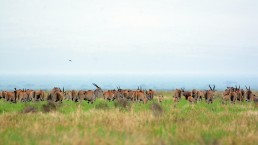
Tourist andvisitors information
The park conserves one of the largest diversities of mammalian species as compared to other parks and 63% of all mammal families in Ethiopia. The park offers excellent opportunity to view wildlife. It supports large herds of Buffalo, Burchell’s Zebra, Eland, Beisa Oryx, Tiang, Lelwel Hartebeest, and Grant’s Gazelle. Other wildlife that is relatively easy to see includes Lion, Giraffe, Ostrich, Greater Kudu, Hyena and Warthog. Cheetah and Wild Dogs are also present but are rare nowadays. The riverine forests are home to primates including the Colobus Monkey and the rare de Brazza’s Monkey. Elephants are seen irregularly and only in certain seasons. The Illilbai hot springs located in the middle of the park offer opportunity to see a diversity of wildlife as they come to drink during the early mornings and evenings. The lower Omo valley is a UNESCO Heritage Site after the significant discovery of early hominids in 1982. The Omo is also exceptionally known for the diversity of ethnic groups. While the peoples who live adjacent to the park are the Mursi, Bena, Surma and the Nyangatom; the Bodi and Dizi are also associated with the park.
Contactinformation
Photo credits: Aziz Ahmed, Nakachew Birlew, Solomon Worku and Ludwig Siege


